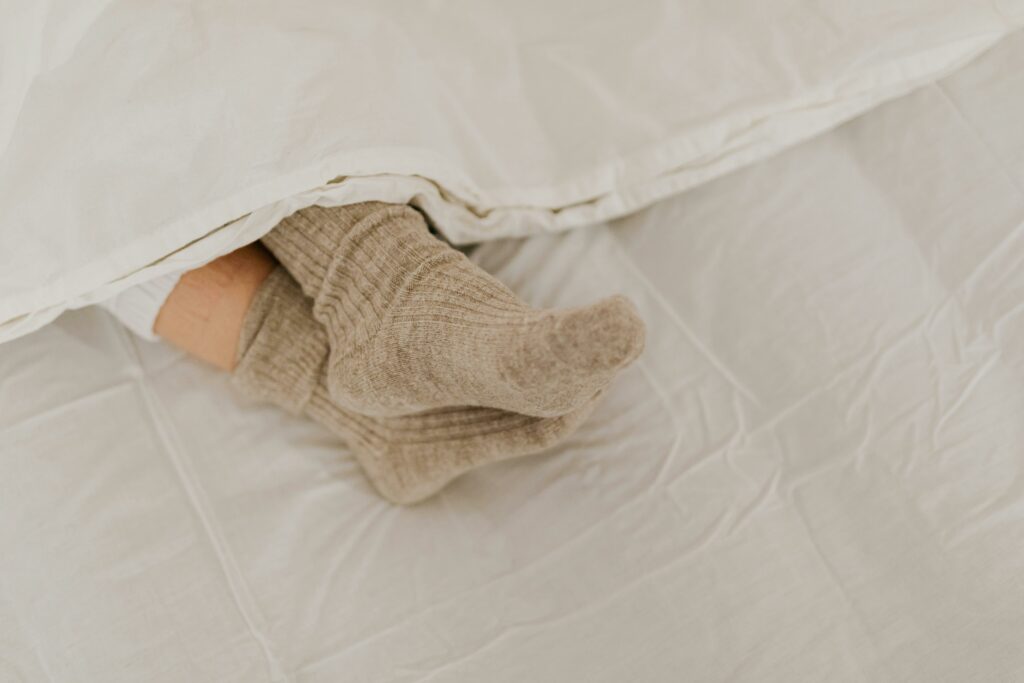A clean and fresh mattress is essential for a good night’s sleep, but over time, spills, sweat, and accidents can leave unsightly stains. Without proper cleaning, these stains can lead to odors, bacteria growth, and a less comfortable sleeping environment. Learning how to remove stains from your mattress effectively will help maintain its hygiene, extend its lifespan, and ensure a healthier sleep space.
Key Takeaways
- Stains on a mattress can come from sweat, spills, pet accidents, and more.
- Different stains require different cleaning methods and solutions.
- Regular maintenance and protection help prevent permanent stains and odors.
- Using natural and chemical cleaners appropriately can ensure mattress longevity.
- A fresh, clean mattress improves sleep quality and indoor air hygiene.
Common Causes of Mattress Stains
Mattresses are prone to a variety of stains that can develop over time. Identifying the type of stain is crucial for choosing the right cleaning approach. Stains not only affect the appearance of your mattress but can also lead to unpleasant odors, bacteria growth, and allergen accumulation. Understanding the most common causes of stains can help you take preventative measures and respond quickly when accidents happen.
Sweat and Body Oil Stains
Regular cleaning and the use of protective covers help minimize the effects of these stains. Additionally, proper ventilation and reducing humidity levels in the bedroom can help prevent excess moisture from being absorbed by the mattress. Over time, natural oils from the body and sweat can seep into the mattre
Spilled Drinks and Food Stains
Coffee, tea, wine, and food spills can quickly soak into the mattress fabric, leaving dark or sticky residues that may attract bacteria and dust mites. If not cleaned immediately, these stains can penetrate deep into the mattress layers, making removal more difficult over time. Sugary and acidic drinks, such as soda or citrus juices, can weaken fabric fibers and contribute to discoloration. Additionally, leftover food particles can attract pests, leading to hygiene concerns. To minimize damage, always blot spills as soon as they occur and use gentle cleaning solutions to break down stains without saturating the mattress. Coffee, tea, wine, and food spills can quickly soak into the mattress fabric, leaving dark or sticky residues that may attract bacteria and dust mites.
Urine and Pet Accidents
Accidents from children or pets can cause deep-seated stains and lingering odors if not addressed immediately. These stains often require enzyme-based cleaners to break down organic matter.
Blood Stains
Blood stains can set quickly and become difficult to remove if not treated right away. The proteins in blood cause it to bind to fabric fibers, making immediate action crucial. Cold water and hydrogen peroxide are commonly used solutions, as hot water can cause the stain to set deeper. Enzyme-based cleaners can also be effective in breaking down the organic material.
Mold and Mildew Stains
Excess moisture in the mattress can lead to mold and mildew stains, which are harmful to health and require immediate attention to prevent spreading. Mold and mildew not only cause unpleasant odors but can also trigger allergies and respiratory issues. These stains typically develop in humid environments or when a mattress is exposed to liquid spills that are not dried properly.

Step-by-Step Guide to Removing Mattress Stains
Each type of stain requires a specific approach to ensure complete removal without damaging the mattress fabric.
General Mattress Cleaning Tips
Keeping your mattress clean is essential for both hygiene and comfort. Regular cleaning helps eliminate dust, allergens, and bacteria, ensuring a healthier sleep environment. Establishing a consistent cleaning routine and using the right techniques will prevent stains from setting in and extend the lifespan of your mattress. By following these general mattress cleaning tips, you can maintain a fresh and odor-free sleeping surface for years to come.
- Act quickly to prevent stains from setting into the mattress fibers.
- Always use a minimal amount of liquid to prevent excess moisture buildup.
- Blot stains instead of scrubbing to avoid spreading the mess.
- Allow the mattress to dry completely before putting sheets back on.
Removing Sweat and Body Oil Stains
Sweat and body oil stains are among the most common causes of discoloration on a mattress. Over time, these stains can lead to yellowing, unpleasant odors, and even bacterial growth if not properly treated. Since mattresses absorb moisture from the body during sleep, it’s essential to clean sweat and oil stains regularly to maintain a fresh and hygienic sleeping environment. Using the right cleaning methods can effectively break down these stains without damaging the mattress fabric.
- Mix equal parts hydrogen peroxide, baking soda, and a few drops of dish soap.
- Apply the solution to the stain using a spray bottle.
- Let it sit for at least 15 minutes before blotting with a clean cloth.
- Sprinkle baking soda over the area to absorb any remaining moisture, then vacuum after it dries.
Removing Drink and Food Stains
Food and drink spills are common causes of mattress stains, especially for those who enjoy snacks or beverages in bed. These stains can set quickly, leading to discoloration and attracting bacteria if not treated promptly. Whether it’s coffee, wine, or food residue, acting fast can prevent long-term damage and odors. Using gentle yet effective cleaning solutions will help lift stains without harming the mattress fabric.
- Blot up excess liquid with a dry cloth or paper towel.
- Mix one cup of warm water with a tablespoon of dish soap.
- Dab the solution onto the stain with a cloth, avoiding excessive moisture.
- Wipe with a clean, damp cloth to remove soap residue.
Removing Urine and Pet Stains
Urine and pet stains can be particularly challenging to remove from a mattress due to their strong odors and deep penetration into the fabric. If not cleaned properly, these stains can lead to bacteria buildup and lingering smells. Immediate action is key to preventing permanent damage and ensuring a fresh, odor-free sleeping surface. Enzyme-based cleaners are especially effective for breaking down organic matter, while natural solutions like vinegar and baking soda help neutralize odors.
- Blot as much liquid as possible with a dry towel.
- Mix equal parts white vinegar and water, then spray onto the stain.
- Blot the area with a clean cloth, then sprinkle baking soda over it.
- Let the baking soda sit for a few hours before vacuuming it up.
Removing Blood Stains
Blood stains can be particularly stubborn and difficult to remove if not treated immediately. The proteins in blood cause it to set quickly, making it essential to act fast before the stain penetrates deep into the mattress fibers. Using cold water and gentle cleaning agents helps break down the stain without damaging the mattress material. Avoid using hot water, as it can cause the stain to set further, making removal more challenging.
- Dab the stain with a cloth soaked in cold water to loosen it.
- Apply hydrogen peroxide directly to the stain and let it bubble.
- Blot with a dry cloth, repeating as necessary.
- Once the stain is gone, let the mattress air dry.
Removing Mold and Mildew Stains
Mold and mildew stains can develop on a mattress due to excess moisture, poor ventilation, or prolonged exposure to damp conditions. These stains not only create an unpleasant odor but can also pose serious health risks, including respiratory issues and allergies. Addressing mold and mildew stains as soon as they appear is crucial to preventing further spread and maintaining a safe sleeping environment. Using the right cleaning techniques will help eliminate spores while preserving the integrity of the mattress.
- Mix equal parts rubbing alcohol and water.
- Lightly dampen a cloth and blot the moldy areas.
- Allow the mattress to dry in direct sunlight if possible.
- Use a vacuum with a HEPA filter to remove any remaining spores.
Preventing Mattress Stains
Preventing stains on your mattress is much easier than removing them after they occur. Taking proactive steps to protect your mattress not only keeps it clean but also extends its lifespan and ensures a healthier sleeping environment. By incorporating simple habits and using protective bedding, you can effectively reduce the risk of stains and odors.
While accidents happen, taking preventive measures can help keep your mattress clean and free of stains.
Use a Waterproof Mattress Protector
A high-quality mattress protector acts as a barrier against spills, sweat, and allergens, keeping the mattress stain-free. It also helps prevent dust mites, pet dander, and bacteria from settling into the fabric. Look for a breathable, hypoallergenic protector that allows airflow while blocking moisture. Wash the protector regularly to ensure it remains effective and hygienic.
Wash Bedding Regularly
Regularly washing sheets, pillowcases, and blankets helps reduce the buildup of oils, sweat, and dust that can seep into the mattress. Ideally, bedding should be washed once a week using hot water to eliminate bacteria, allergens, and dust mites. Using hypoallergenic detergent can further improve sleep quality, especially for those with sensitivities. Additionally, washing mattress covers and pillow protectors monthly enhances overall cleanliness and longevity. Regularly washing sheets, pillowcases, and blankets helps reduce the buildup of oils, sweat, and dust that can seep into the mattress.
Vacuum the Mattress Frequently
Using a vacuum with a brush attachment can help remove dust, allergens, and any loose debris from the mattress surface. Regular vacuuming prevents dust mites from accumulating and reduces exposure to allergens that can affect sleep quality. For best results, vacuum your mattress at least once a month, paying extra attention to seams and crevices where dirt and debris tend to gather. If you have pets, consider vacuuming more frequently to remove pet hair and dander.
Rotate or Flip the Mattress
Rotating or flipping the mattress every few months helps distribute wear evenly and prevents permanent indentations or stains in one area. Over time, pressure from sleeping in the same spot can cause sagging, which affects comfort and support. Most modern mattresses should be rotated 180 degrees every three to six months, while double-sided mattresses can also be flipped. Keeping a consistent rotation schedule extends the mattress’s lifespan and ensures even wear.
Avoid Eating or Drinking in Bed
Keeping food and drinks away from the bed minimizes the risk of accidental spills and stains. Crumbs and liquid spills can seep into the mattress, leading to stubborn stains, odors, and even bacterial growth. Additionally, food particles can attract pests such as ants or dust mites, further compromising mattress hygiene. Keeping food and drinks away from the bed minimizes the risk of accidental spills and stains.
Frequently Asked Questions
1. How often should I clean my mattress?
It is recommended to clean your mattress every three to six months. Spot-clean stains as soon as they occur, and deep clean the entire mattress at least twice a year.
2. Can I use bleach to remove stains from my mattress?
Bleach is too harsh for most mattress materials and can break down the fabric fibers. Instead, use mild solutions like hydrogen peroxide, baking soda, or white vinegar.
3. What is the best way to dry a mattress after cleaning?
To dry a mattress quickly, place it in a well-ventilated area, use a fan, or position it near an open window. Avoid using excessive water during cleaning to speed up drying time.
4. When should I replace my mattress?
If your mattress has persistent stains, odors, or has lost its comfort and support, it may be time to replace it. Most mattresses last between 7-10 years with proper care.
Final Thoughts
Maintaining a stain-free mattress improves sleep quality and extends its lifespan. By using the right cleaning techniques and preventive measures, you can keep your mattress fresh, hygienic, and free of unwanted stains. Whether dealing with accidental spills or long-term wear, knowing how to clean and protect your mattress will ensure a comfortable and healthy sleeping environment.





